

Josh Nevett
CarExpert's top five large SUV reviews of 2025
3 Days Ago
The new Ford Everest four-wheel drive follows in the Ranger ute's footsteps by bringing new levels of refinement to the segment.

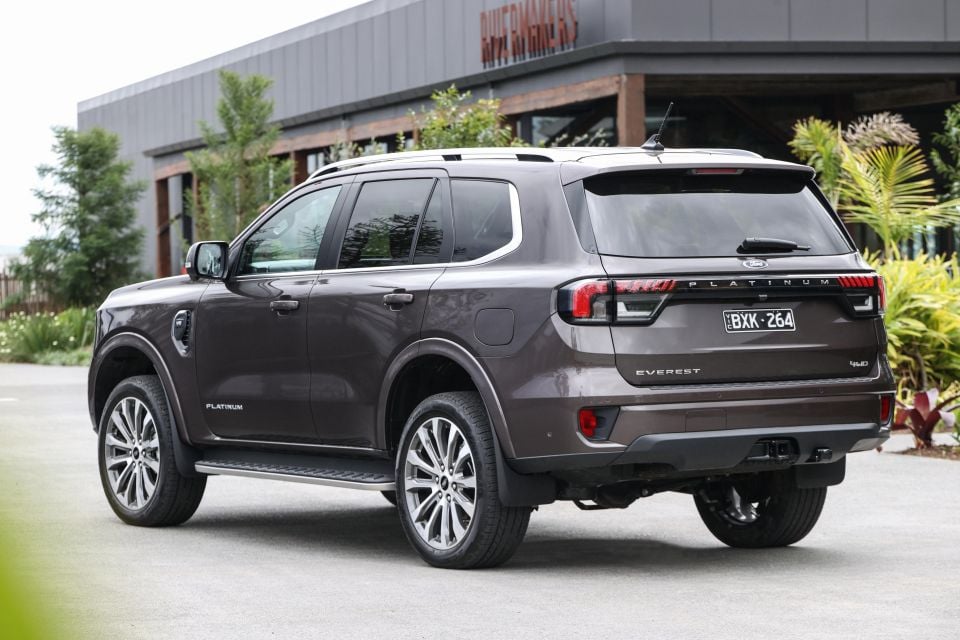

Quickly see how this car stacks up against its competition. Select any benchmark to see more details.
Where expert car reviews meet expert car buying – CarExpert gives you trusted advice, personalised service and real savings on your next new car.
The last Ford Everest came late in the Ranger’s life. This time around, Ford hasn’t dawdled.
The new Ranger ute has barely hit Australian showrooms, and already the seven-seat Everest is on hand to offer all the same off-road capability in a body with space for seven.
Like the Ranger, it packs a tougher new look on the outside and, like the Ranger, its interior is brimming with the sort of technology that would once have been unimaginable in a car with commercial roots.

There’s V6 turbo-diesel power now for people who want more grunt, and a refined take on the existing 2.0-litre Bi-Turbo diesel for those who don’t.
Ford is casting the net wide with the new Everest. At the bottom end of the range, it needs to take on more budget-oriented body-on-frame four-wheel drives like the Mitsubishi Pajero Sport.
Mid-range models are aimed at the ever-popular Isuzu MU-X, while the range-topping Platinum lines up neatly with the popular but ageing Toyota LandCruiser Prado.
That’s no small ask. Is the Everest up to the task, or does it have a mountain to climb?
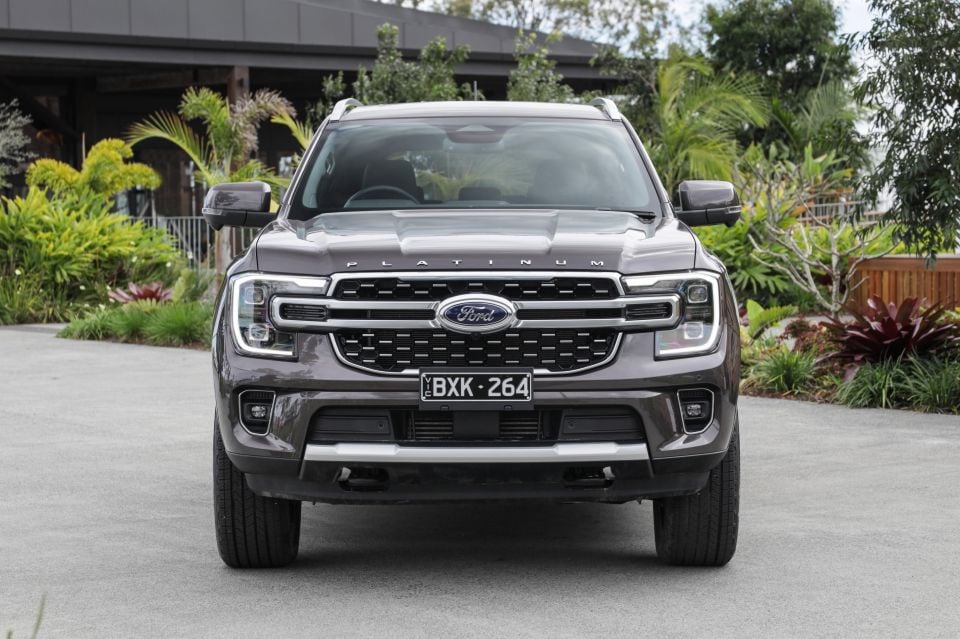
The Ford Everest range kicks off at $52,990 before on-road costs, and extends to $77,690 before on-roads for the flagship Platinum 4×4.
At the bottom end, that aligns the cheapest Everest with a Mitsubishi Pajero Sport GLS 4WD ($54,190) or base Isuzu MU-X LS-M ($48,900 to $54,900).
The mid-range Trend 4×4 is priced in line with the range-topping MU-X LS-T 4×4 ($67,400 list, or $65,990 drive-away).
At the top end, the Platinum sits alongside the mid-range Toyota Prado VX ($76,348). In the past, the idea of a ute-based SUV taking on the more purpose-built Prado might have seemed fanciful, but the Everest has more than enough tricks up its sleeve to make an impact.
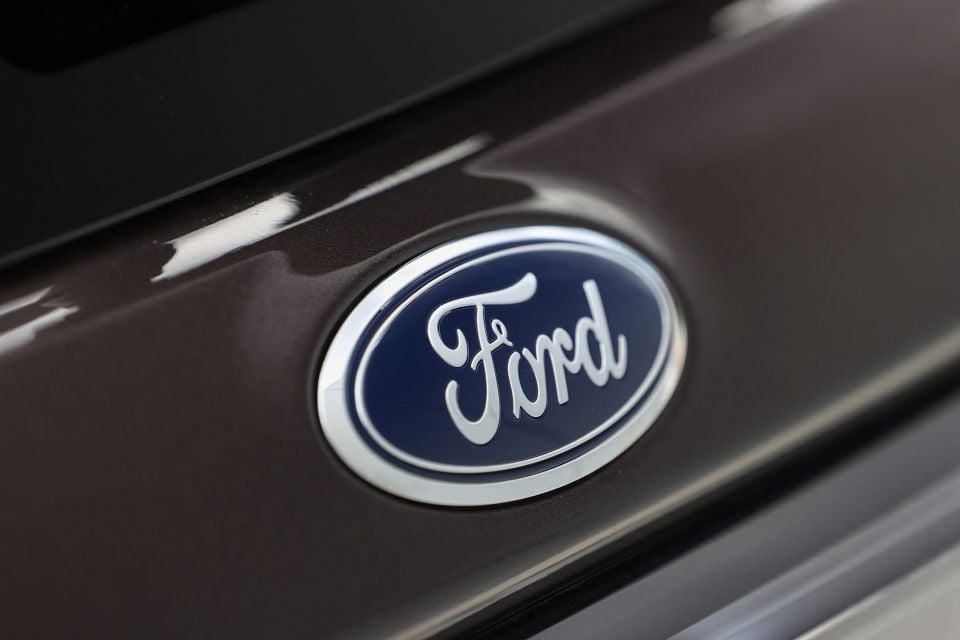
2023 Ford Everest pricing:
All prices include luxury car tax if applicable, but exclude on-road costs
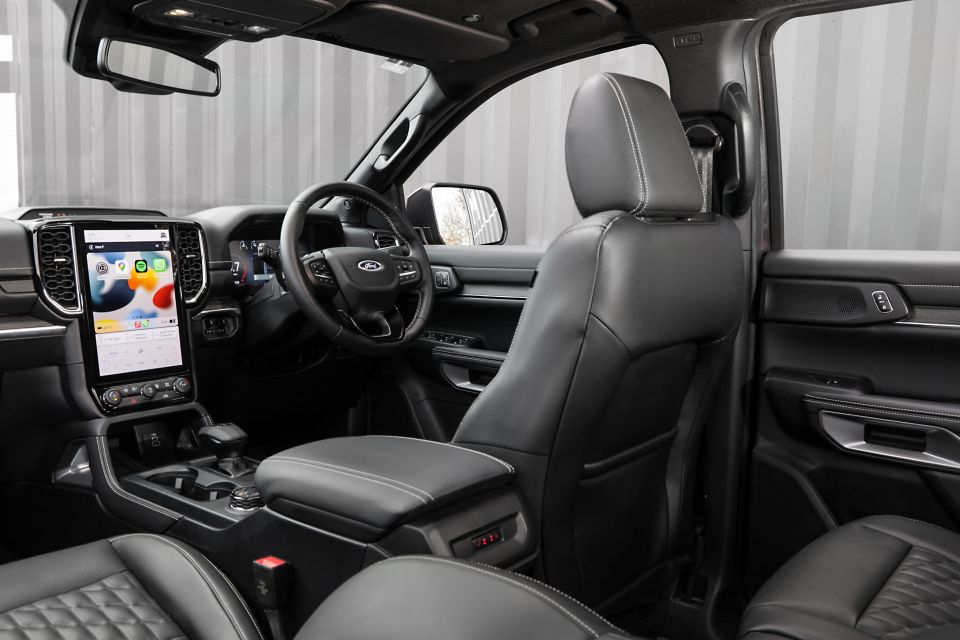
Buy your new car without the stress. It's fast, simple and completely free.

Great service from Travis and team, second time I have used this business would not hesitate to recommend them to anyone
Craig C.
Purchased a Ford Ranger in Sunshine Coast, QLD
CarExpert helped Craig save thousands on his Ford Ranger, now let us save you on your next new car.
Find a dealForward of the second row, you’d be hard pressed to separate the Everest from the Ranger. That’s mostly a good thing.
Although not everyone will love the upright design and utilitarian plastics, the Everest runs the same class-leading infotainment setup as its ute sibling across the range. The base Ambiente features a 10-inch vertical display, while the Trend and up get a 12-inch display running the latest Sync 4 software.
The software looks and feels very modern, and Ford has retained some physical buttons for frequently-used climate functions, so it’s easy to fiddle with the temperature on the move.
The menu structure is logical, and the sheer amount of screen real estate means key information isn’t buried. It’s possible to have your mapping, radio preferences, and climate information on display all at once, for example.
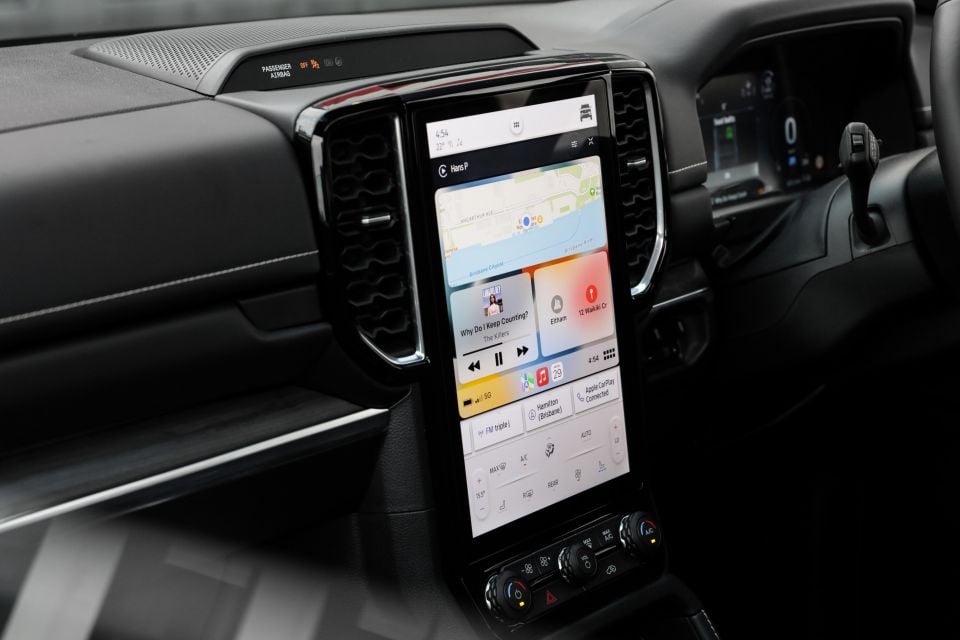
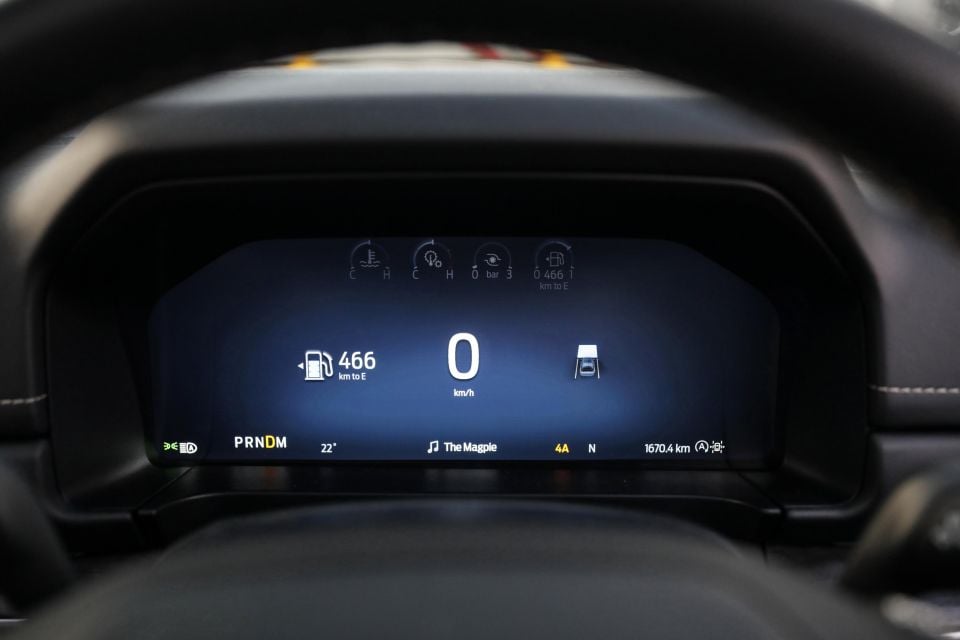
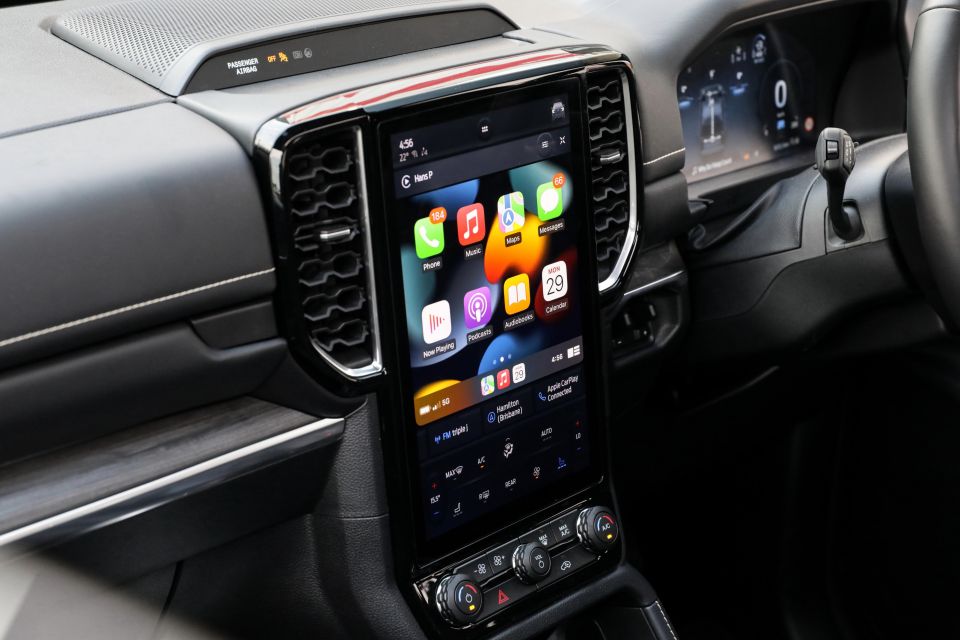
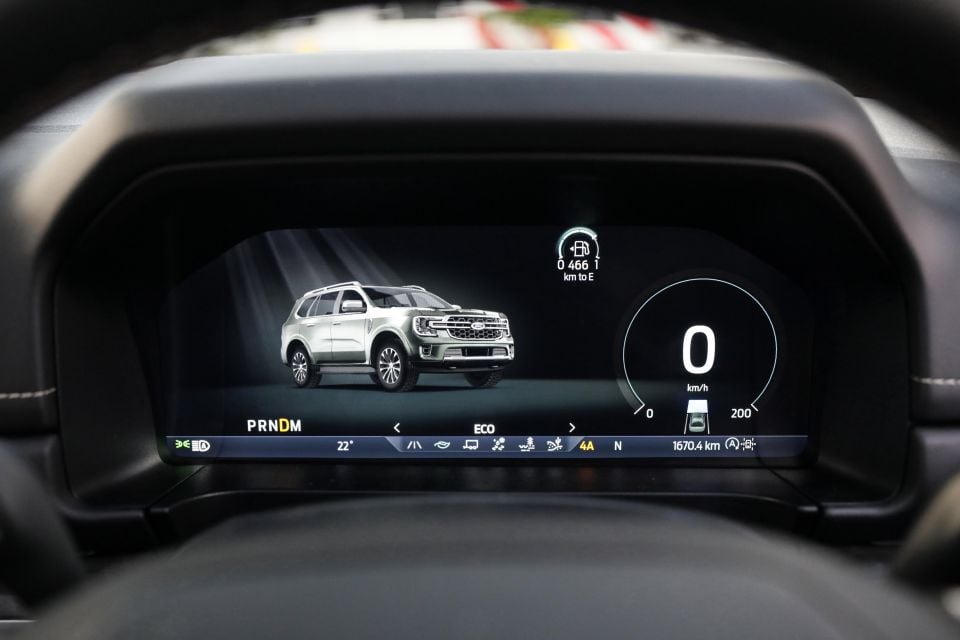
Wireless Apple CarPlay connected flawlessly for us, although it drains the battery rapidly with no wireless charger.
A bit more processing power still wouldn’t go astray though; the screen sometimes lags when you’re hopping between functions.
Most of the range shares its digital instrument cluster with the Ranger. It’s a simple, effective unit, but it’s not quite as flashy as the 12.4-inch unit standard in the Platinum.
Although it still won’t show you maps, it allows a greater range of displays and features more polished graphics than the rest of the range.
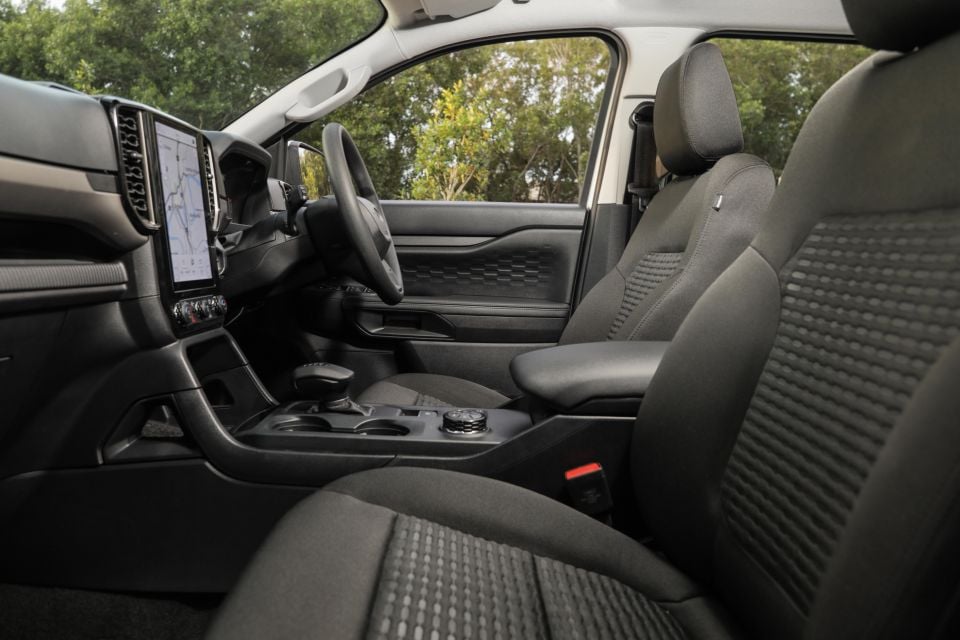
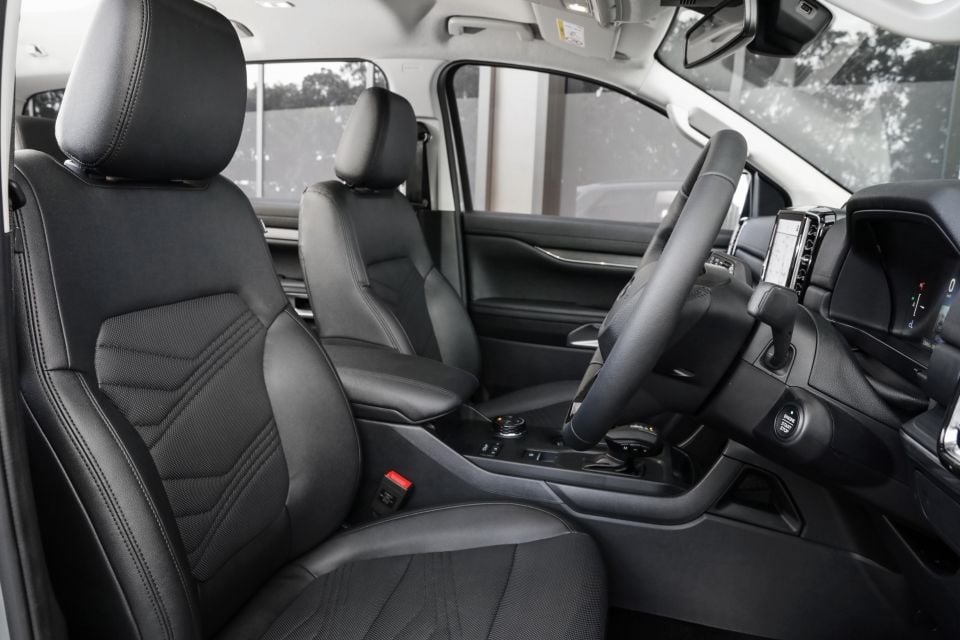
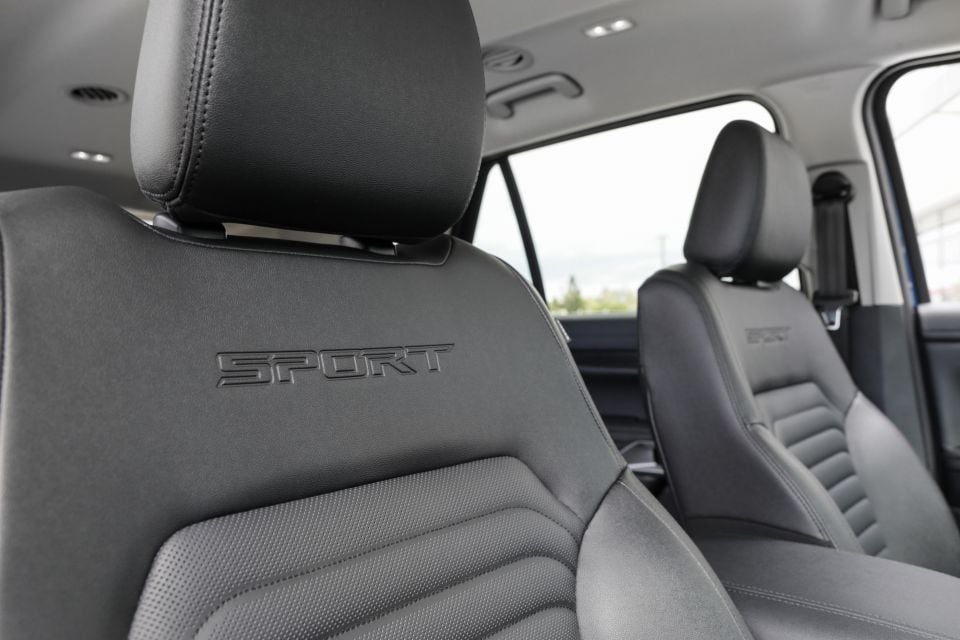
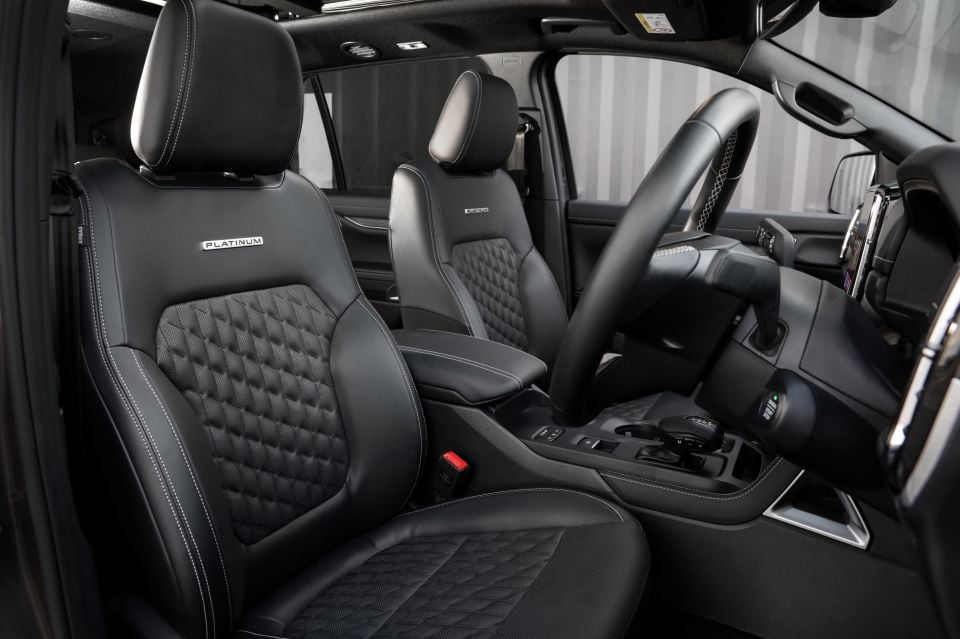
With a tilting and telescoping wheel, well-padded seats that accomodate tall drivers, and plenty of storage up front, the Everest is easily the best 4×4 of its kind out there if you’re planning to spend long stints on the highway – at least, before you get into the LandCruiser realm.
Ambiente models feature soft cloth trim on the seats, while the Trend gets leather-accented seats. The Sport gets a more upmarket design, while the Platinum features plush-feeling quilted seat trim as standard.
The Platinum also gains faux wood trim, ambient lighting, and extra stitching details to elevate it above the rest of the range.
Material quality is generally good, although there’s no escaping the fact this basic interior design serves in everything from the Ranger XL to the Everest Platinum.
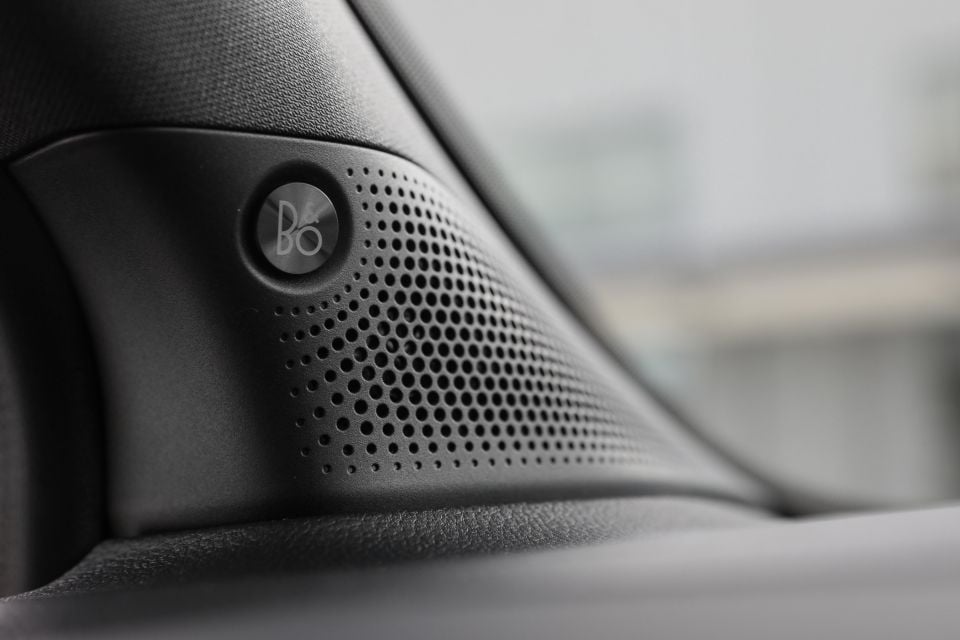

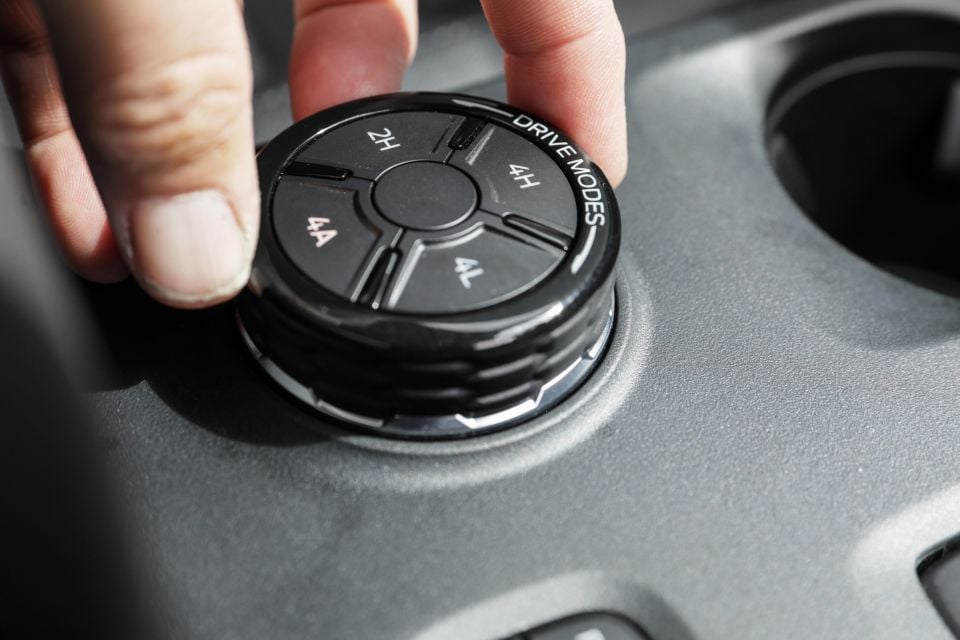
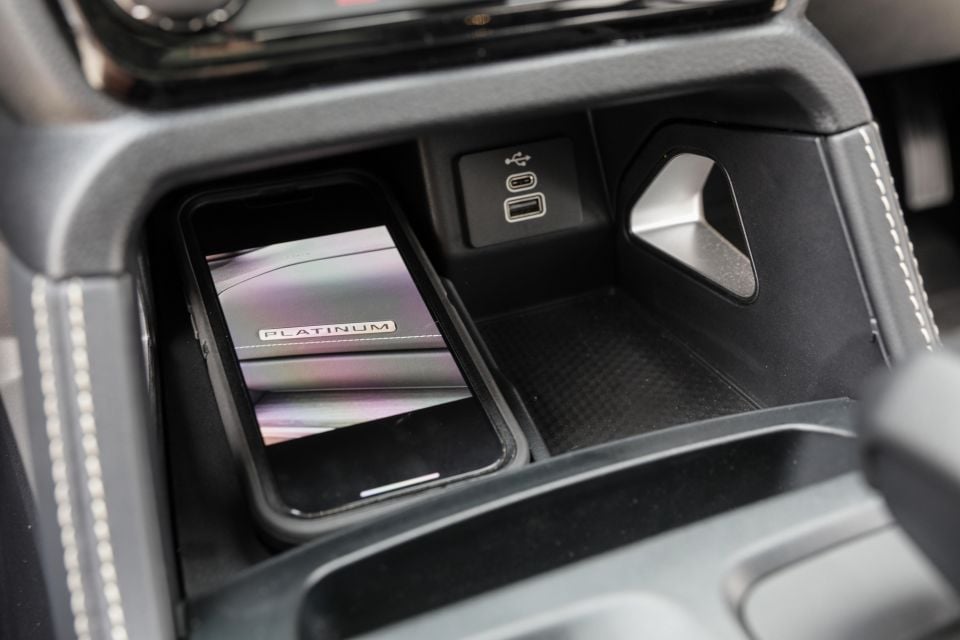
Anywhere you rest your elbow is soft across the range, and the chubby steering wheel feels good range-wide, but some of the plastics in the Platinum aren’t quite befitting of its price tag.
There are some awkward cut lines and joins which are easier to accept in the more workmanlike Ranger than the Everest.
Storage space around the cabin is plentiful. The central bin is deep, the door pockets have plenty of room, there are two cupholders on the transmission tunnel, and the slot beneath the dashboard is huge.
The slot ahead of the gear selector is perfect for a large McDonalds fries – no chip crisis here.
The Everest features an upper glove box in addition to the regular glove box. There are also pop-out cupholders on each end of the dash. Both of these are features more commonly seen in utes than in SUVs.


Step into the second row and there’s plenty of room, plus a pair of USB outlets.
The slightly raised seating position will help quell sickness by affording short occupants a decent view out the front, and the tall windows mean it’s a light, airy place to spend time. There are three top-tether mounts in the second row, and two in the third, as well as ISOFIX anchors on the outboard second-row seats.
Headroom in non-sunroof equipped cars is pretty good for tall passengers, although the tunnel (which houses the air vents) running through the centre of the roof does eat into space for the central occupant.
With its sunroof, the range-topping Platinum has the least headroom of any model in the range.
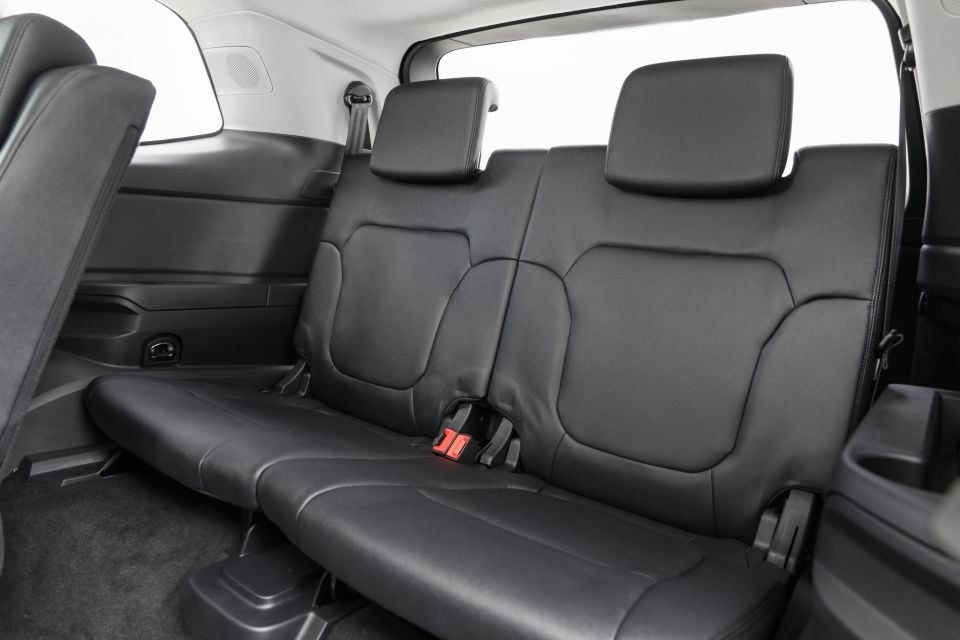
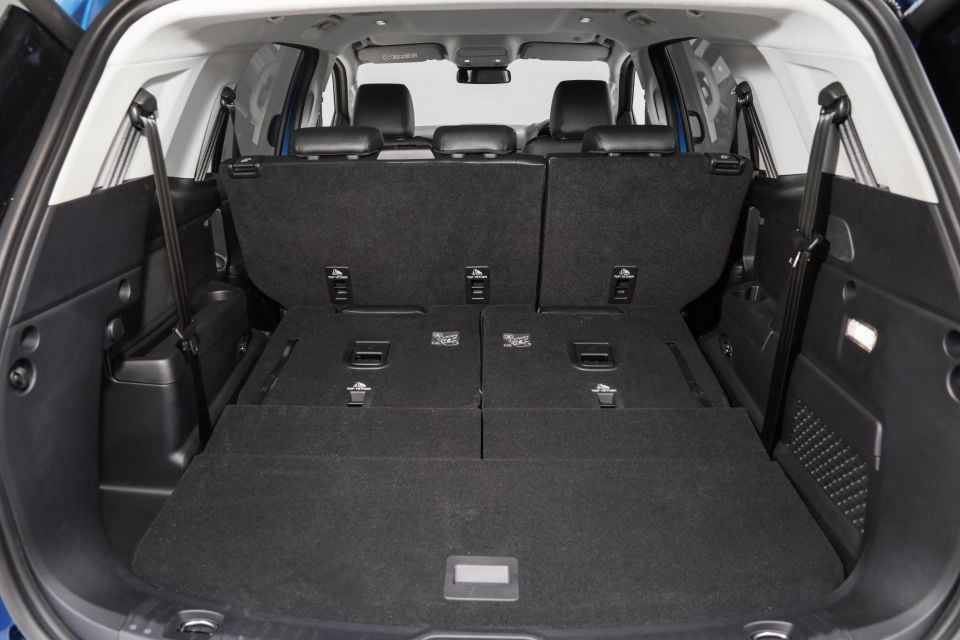
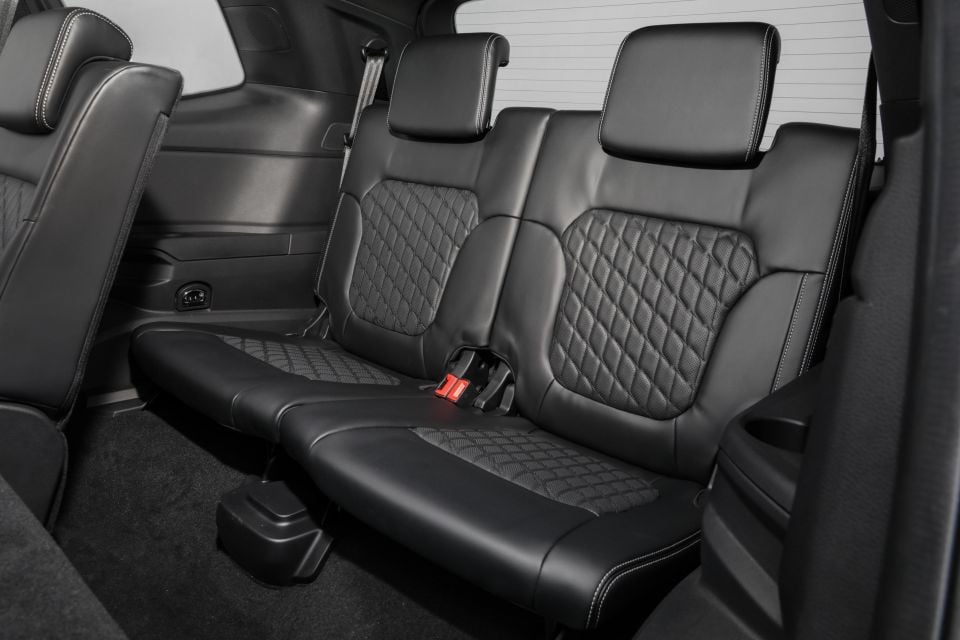

Where the Everest’s boxy new styling has most paid dividends is in the third row. There’s less wheel arch intrusion than before, which frees up more space for occupants, and headroom is generous enough to accomodate small adults.
Access is relatively easy with the second row slid forward and folded, and the sliding bench means you can free up more legroom for third-row occupants by slightly compromising that of people in the second row.
There are vents back there, along with 12V ports. The big windows mean third-row passengers won’t feel like third-world citizens, and the curtain airbags cover all three rows of seating.
Behind the third row, there’s 259L of cargo space, expanding to 898L with it folded and 1823L with the second row folded. With all three rows up, you can fit either two duffel bags or perhaps one suitcase, depending on its size.
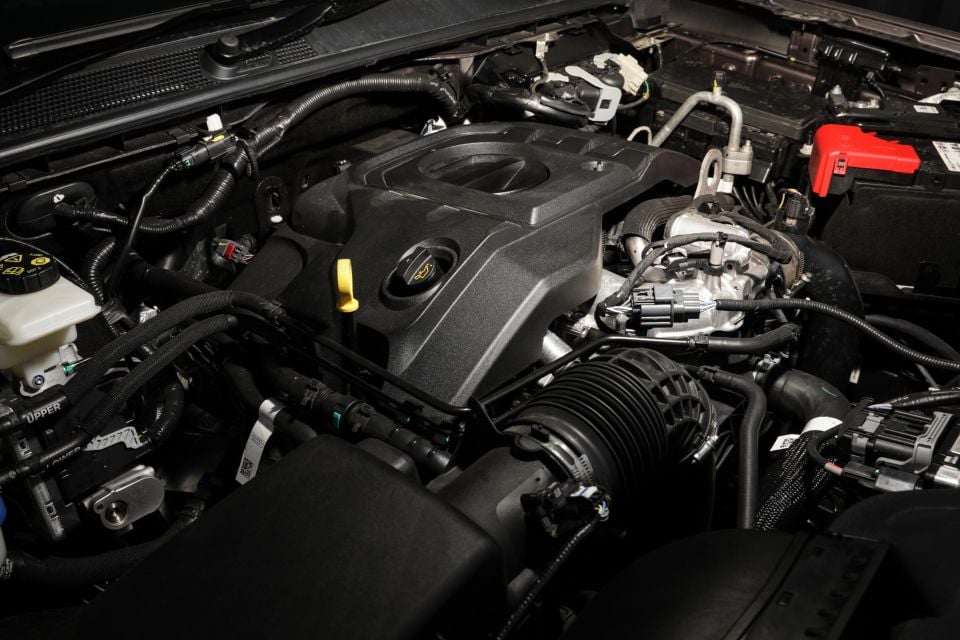
The new Ford Everest is available with two turbo-diesel engines. The entry-level option is a 2.0-litre Bi-Turbo four-cylinder, mated with either rear-wheel drive or full-time-capable four-wheel drive.
It’s offered on the Ambiente and Trend, and is shared with the closely-related Ranger ute. Compared to the equivalent engine in the last Everest, it features new injectors, cooling fans, a new engine cover, new seals, and a host of calibration changes.
Peak power is 154kW, and peak torque is 500Nm. It’s mated to a 10-speed automatic transmission as standard, and drive is sent to all four wheels through a full-time four-wheel drive system – except in 4×2 models, which are rear-wheel drive.
Standard on the Sport and Platinum is a 3.0-litre V6 turbo-diesel engine, producing 184kW and 600Nm. It’s also mated to a 10-speed automatic transmission, with drive sent exclusively through a full-time four-wheel drive system.
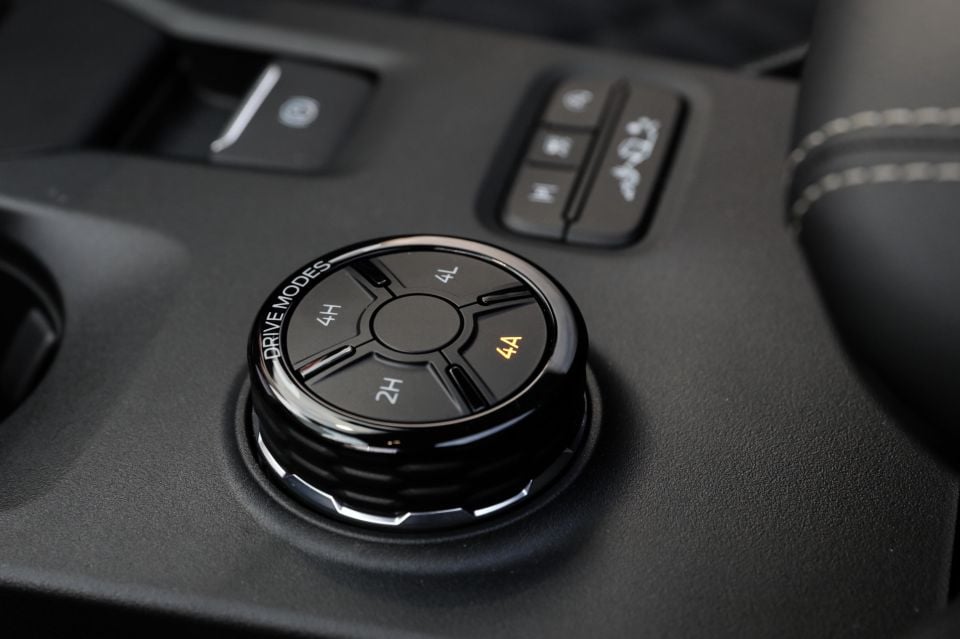
Claimed fuel economy:
The whole range features an 80L fuel tank, although aftermarket specialist ARB offers a long-range unit as well.
As with the Ranger, Ford has also left space under the bonnet for a second battery to power aftermarket accessories.
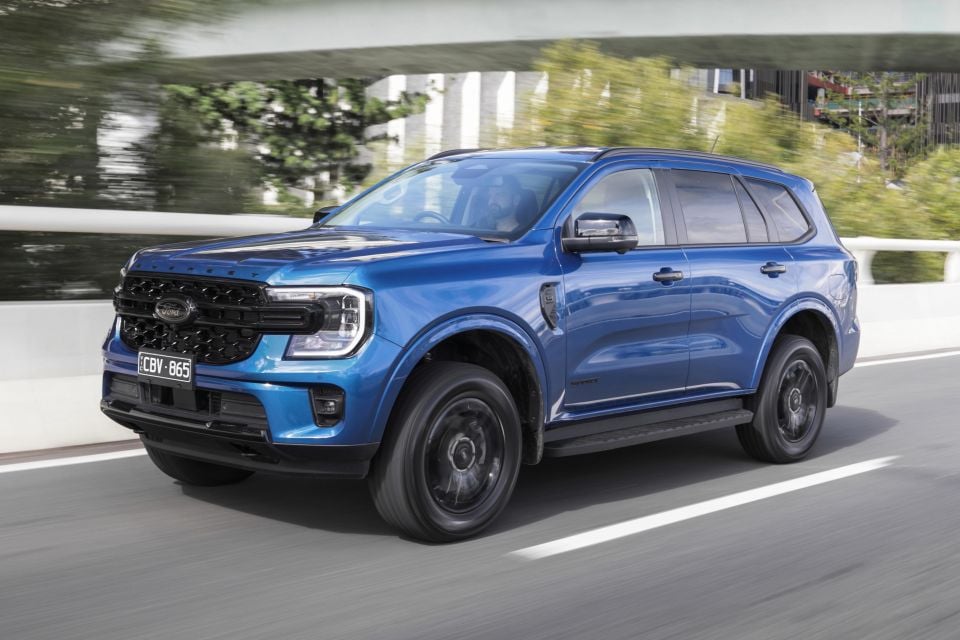
The last Everest did a good job hiding its ute-based origins, but the new one is a step (or two) better again.
Ford has added extra sound deadening under the body, and tweaked the ladder frame relative to the Ranger to reflect the fact this is a less-rugged, more family-oriented vehicle. Of course, it also has a different wheelbase to the Ranger, and rides on a coil-sprung rear suspension with a Watt’s Link instead of leaf springs.
Ride quality is impressive across the range. At lower speeds, you don’t feel small, high-frequency bumps shuddering through the frame like you often do in ute-based four-wheel drives, and at high speeds it feels impressively tied-down.
Although it’s not quite on par with a monocoque crossover for refinement, the truck-like nature that has traditionally characterised off-road capable family haulers has been buried under layers of cotton wool here.
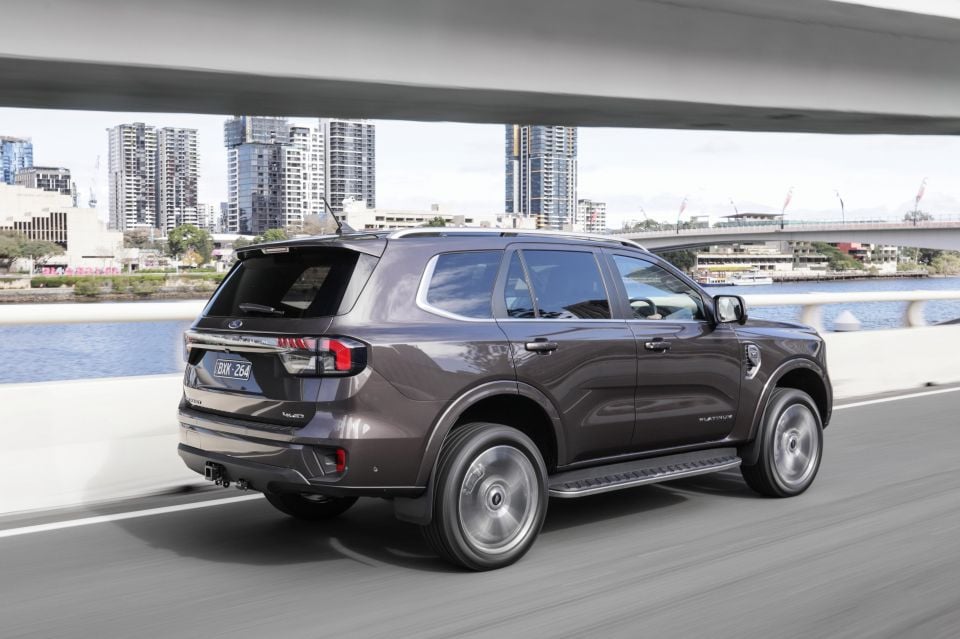
Where expert car reviews meet expert car buying – CarExpert gives you trusted advice, personalised service and real savings on your next new car.
The base Ambiente on its smaller wheels is the most compliant; the Trend on 18s is still very impressive. The Sport comes with 20s standard and the Platinum features 21s, and the ride on both is still decent. We’d be opting for the off-road package with its 18-inch wheels if ride quality is the main priority.
The same helping of refinement has been applied to the powertrains. Although the V6 is the flagship, and the car we’ve most wanted to drive, the Bi-Turbo and its 10-speed automatic have been updated for 2022.
There’s a hint of diesel chug at idle, and it sounds a bit agricultural when you really lean on the throttle, but vibrations are kept nicely in check, and the smaller engine still offers a decent shove in the back. With 500Nm on tap it’s among the class leaders for torque, and the updated automatic transmission isn’t nearly as busy as before.
Although it still occasionally hunts for gears, it doesn’t constantly feel as though it’s caught in two minds about what it wants to do. It’s a good powertrain, especially considering it’s the entry-level option here.
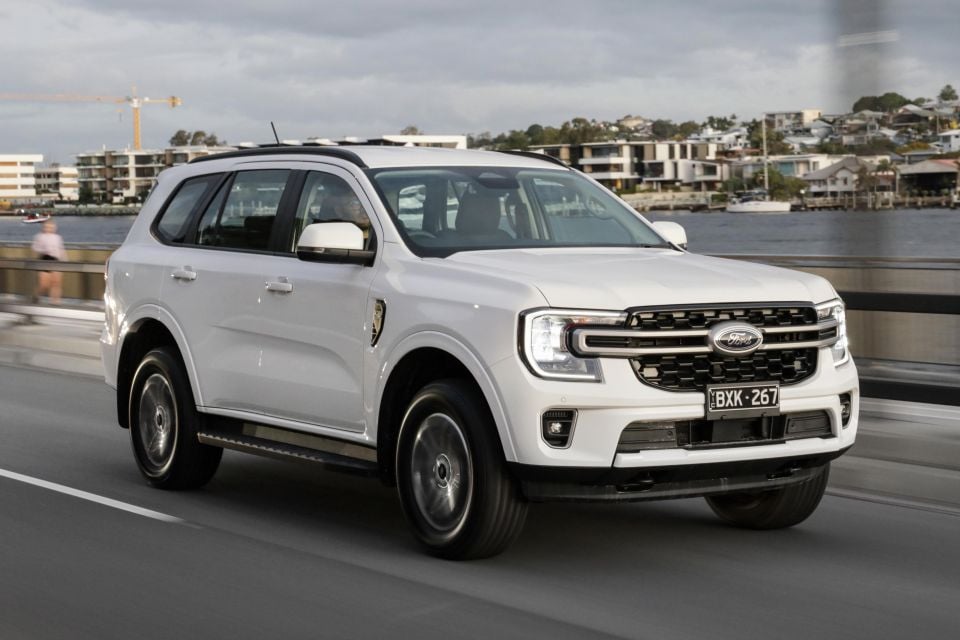
The turbocharged V6 – exclusive to the Sport and Platinum – is the highlight. With an extra 1000cc of displacement, 30kW of power, and 100Nm of torque, it feels effortless in a way the Bi-Turbo doesn’t.
It offers a satisfying surge of performance from below 2000rpm when you lean on the accelerator, and better in-gear response at highway speeds. It doesn’t need to work as hard, and when you need to dig deep you’re immediately aware there’s a higher ceiling on what it can do.
The 10-speed automatic doesn’t shuffle from gear-to-gear as much here as it does when paired with the smaller engine.
There’s no doubt the Bi-Turbo will happily tow, but the performance on offer in the Sport and Platinum will endear it to people who live life with a heavy trailer hitched to their car. It also helps justify what are premium price tags on the two Everest range-toppers.
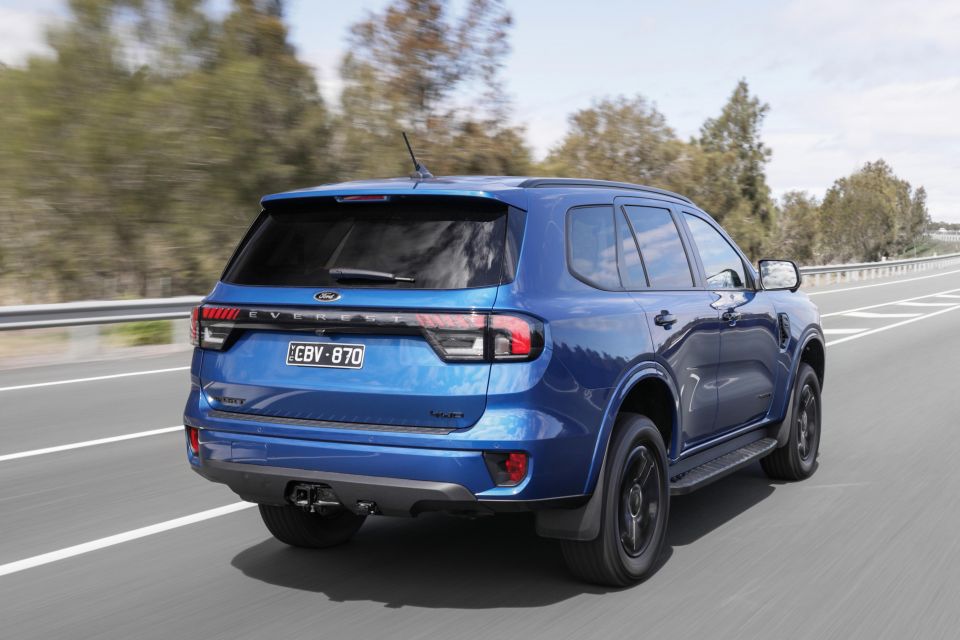
On the open road, the new Everest impresses with its refinement. Ford talked at length about the focus it placed on cutting down on unwanted noise in the cabin, and there’s no question it’s paid off.
At 100km/h on rural Queensland highways it’s possible to have a conversation between rows one and two without straining or raising your voice, and from the front seats it’s clear how much effort has gone into keeping wind and tyre roar at bay.
The lane-keep assist keeps you between the white lines on the highway and holds the car nicely in its lane in tricky conditions, and the adaptive cruise control is smooth and smart. It’s easy to see owners enjoying plenty of low-stress kilometres on the highway.
If the road does get twisty, you’ll notice how much better the steering is in the Everest than before. It feels a bit heavier and a whole lot more direct, inspiring confidence in a way none of its ute-based rivals can match.
The handling is surprisingly good, too. Rather than immediately falling over its outside front wheel, the Everest always felt planted with body roll well-controlled for a vehicle of this size and type.
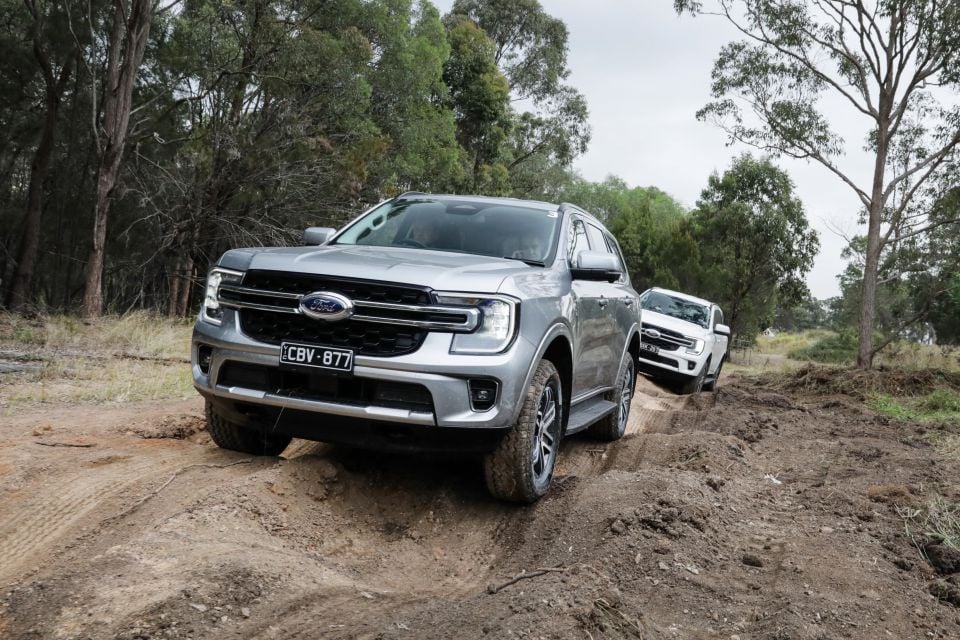
Regardless of which engine you opt for, Everest 4×4 models feature a choice of 2H, 4H, and 4L modes, along with a 4A mode that offers full-time four-wheel drive on sealed surfaces.
Switching between the four-wheel drive modes is easy, and there are plenty of clear indicators as to what’s happening under the skin so nervous off-roaders won’t be caught in the wrong setting.
The Everest glided through our off-road course. It has 226mm of ground clearance in Sport trim, with a wading depth of 800mm.
Approach, departure and breakover angles are 30.2, 25 and 21.9 degrees, respectively, and there’s a locking rear differential for rougher stuff. Also standard is a well-calibrated hill descent control.
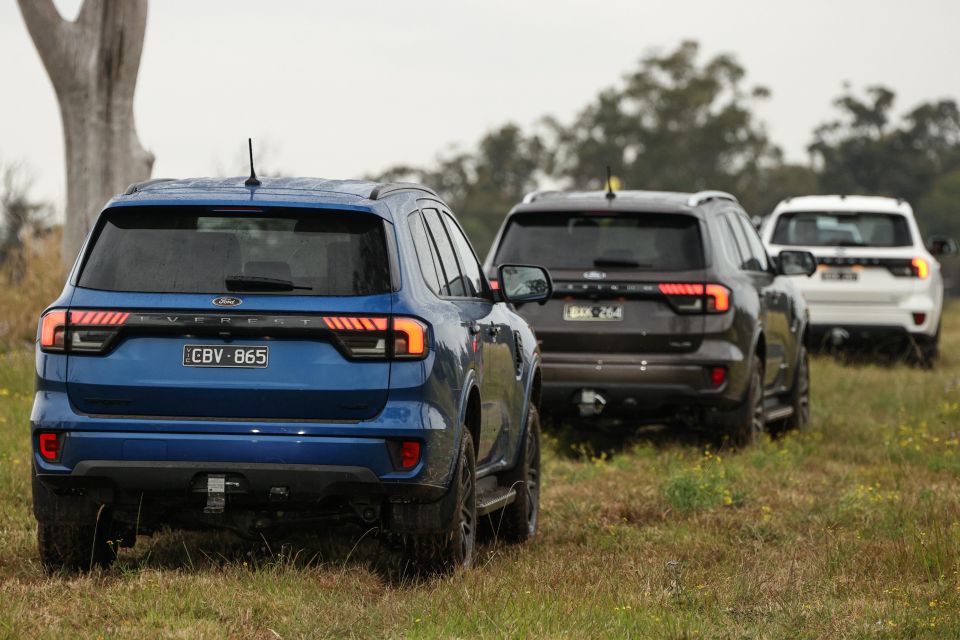
The surround-view camera, part of a $1950 Touring Pack, is worth the cost of admission. It allows you to leave the front camera on while you’re off-roading, and presents a high-resolution view of the trail ahead featuring guidelines. Even without it, the bluff front end is quite easy to place.
There are Slippery, Mud/Ruts and Sand drive modes for off-roading, while an off-road information screen displays data like the steering angle and vehicle pitch and roll angles.
If you’re towing, the optional Tow Pack brings with it an integrated trailer brake controller, with a trailer light check function and connection checklist in the FordPass app.
The app also allows you to remotely lock, unlock and start the vehicle, among other functions enabled by the on-board modem.
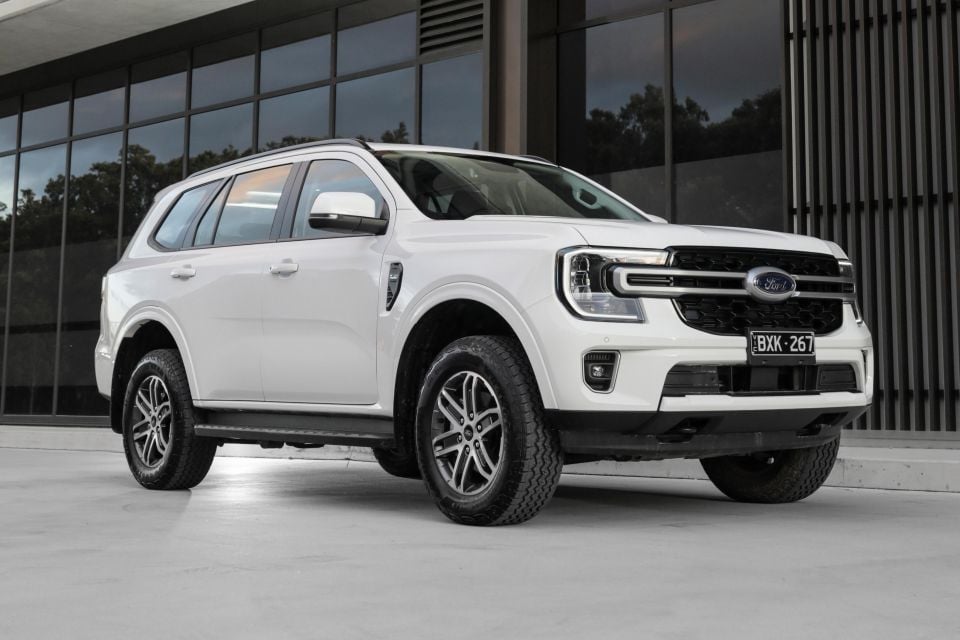



Everest Ambiente highlights:
Ambiente 18-inch Alloy Wheel Pack (4×4 only): $1100

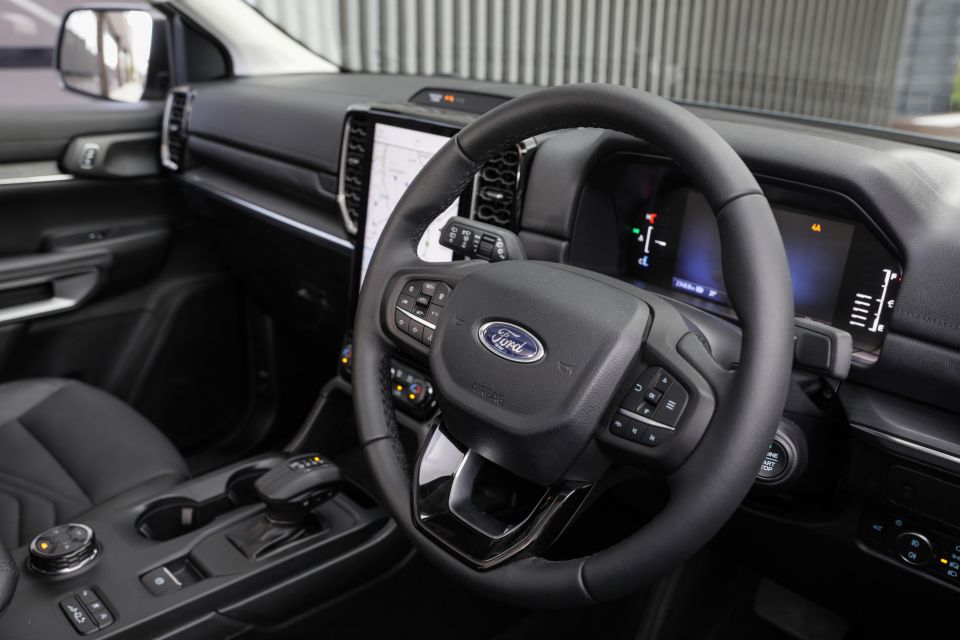
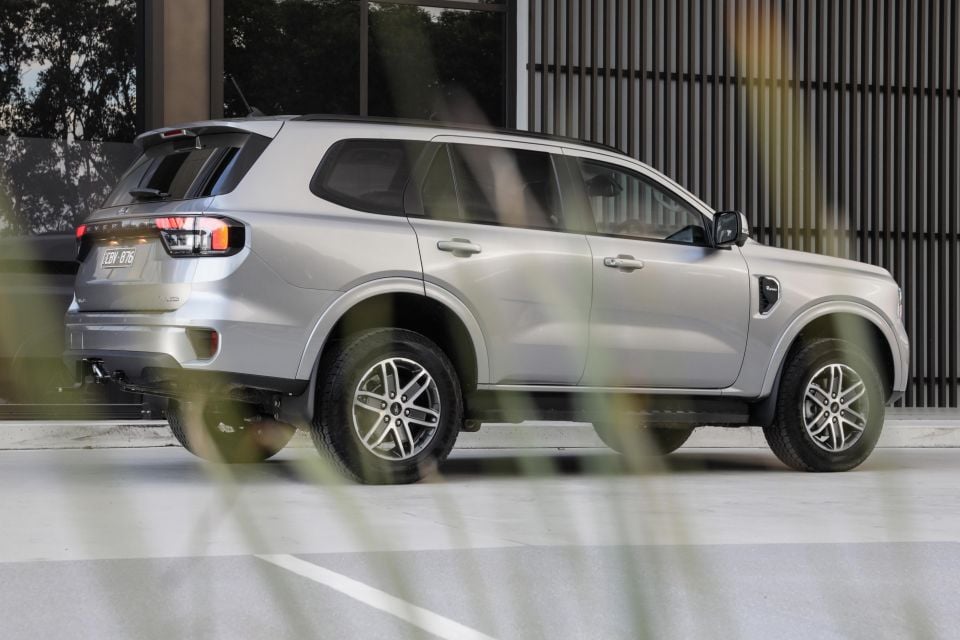
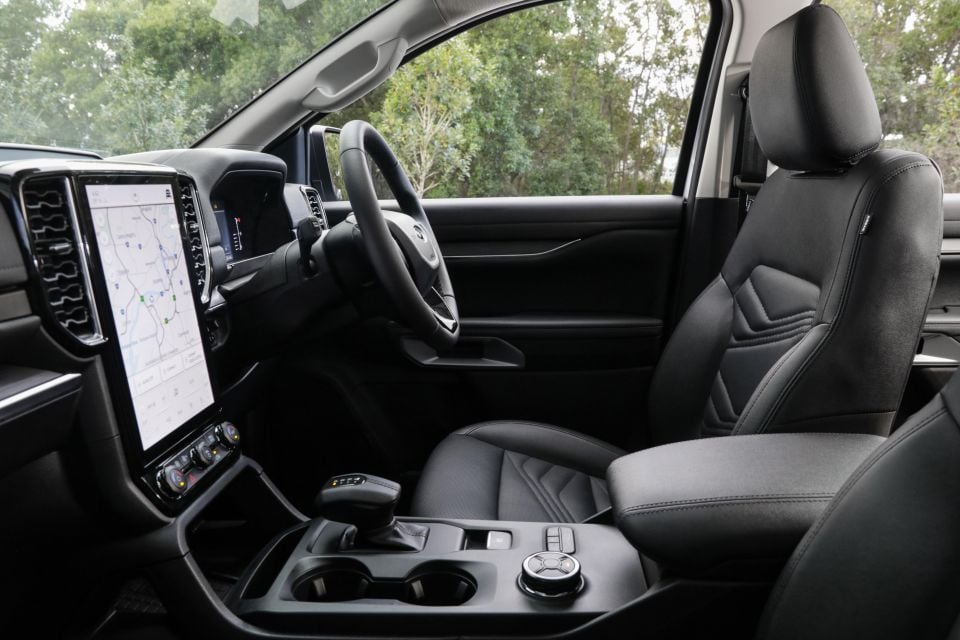
Everest Trend adds:
Trend 18-inch All-Terrain Tyre Pack (4×4 models): $500
Premium Seat Pack (Trend): $900
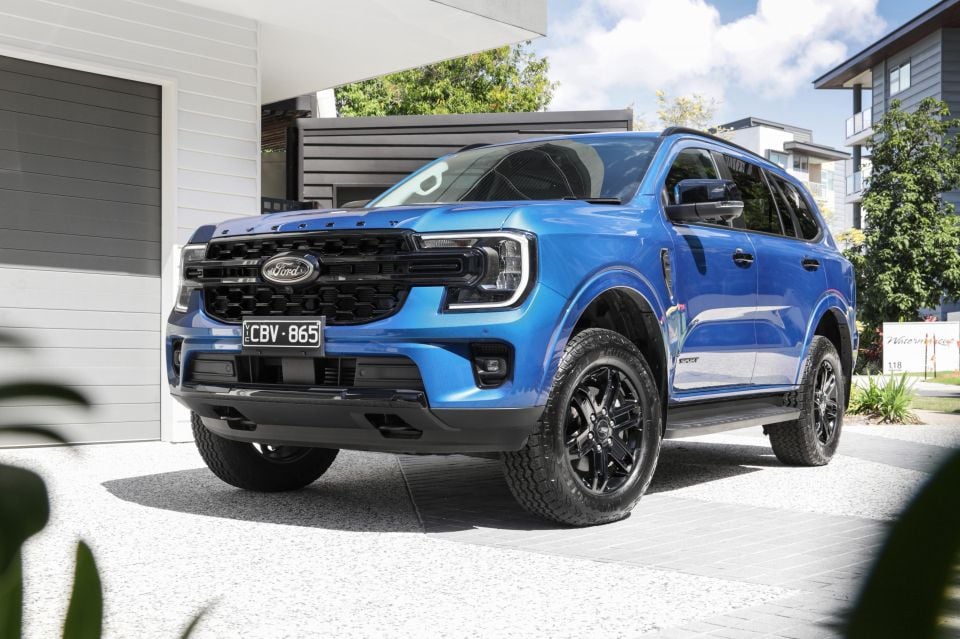
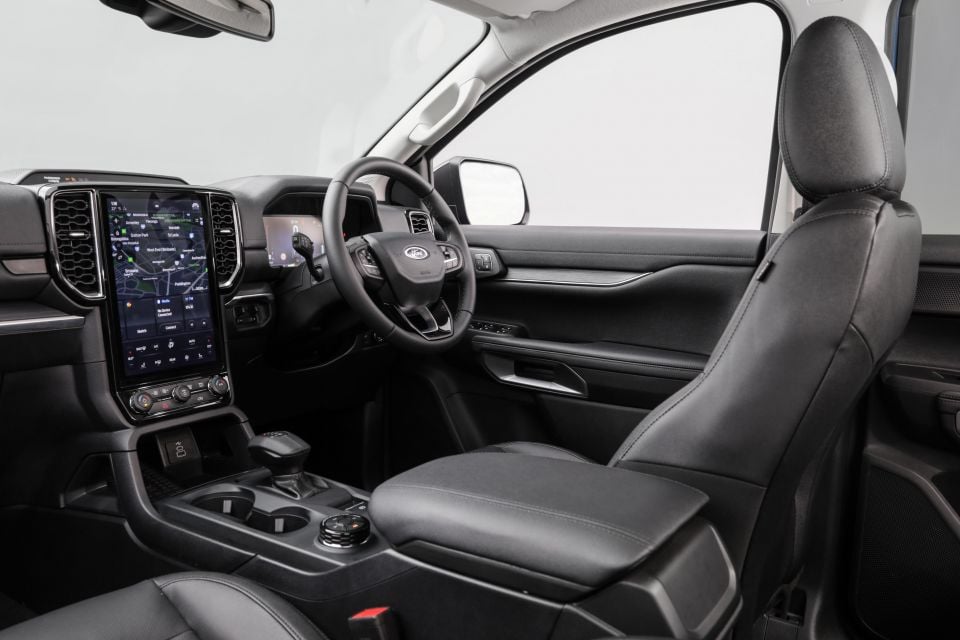

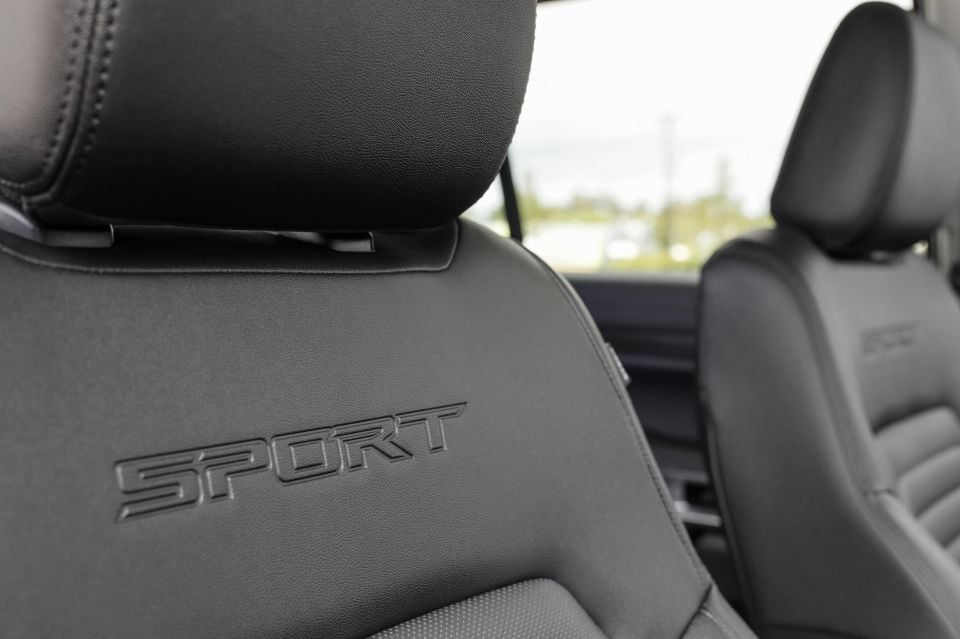
Everest Sport adds:
Touring Pack (Trend 4×4 and Sport): $1950
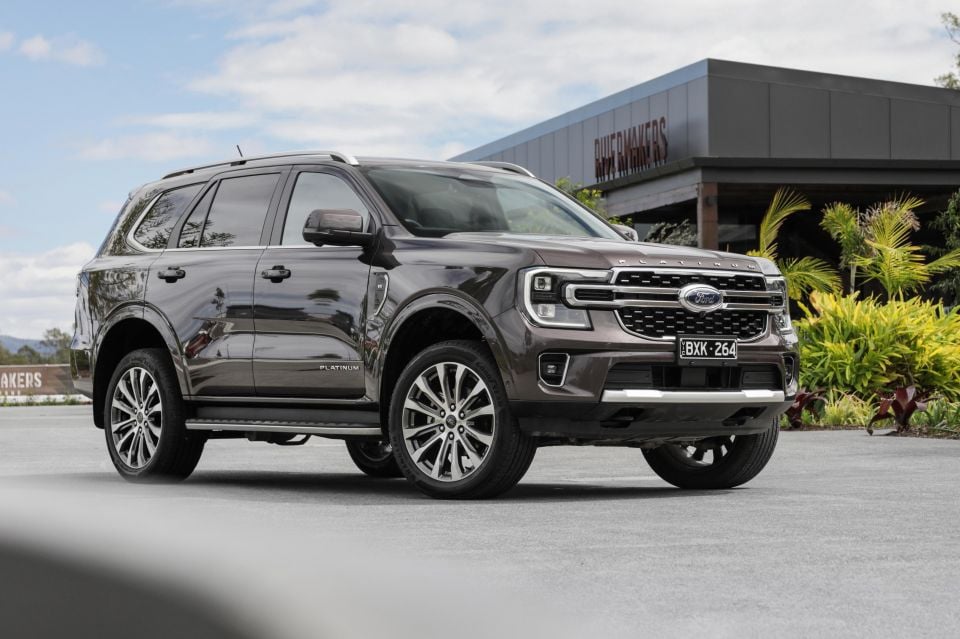
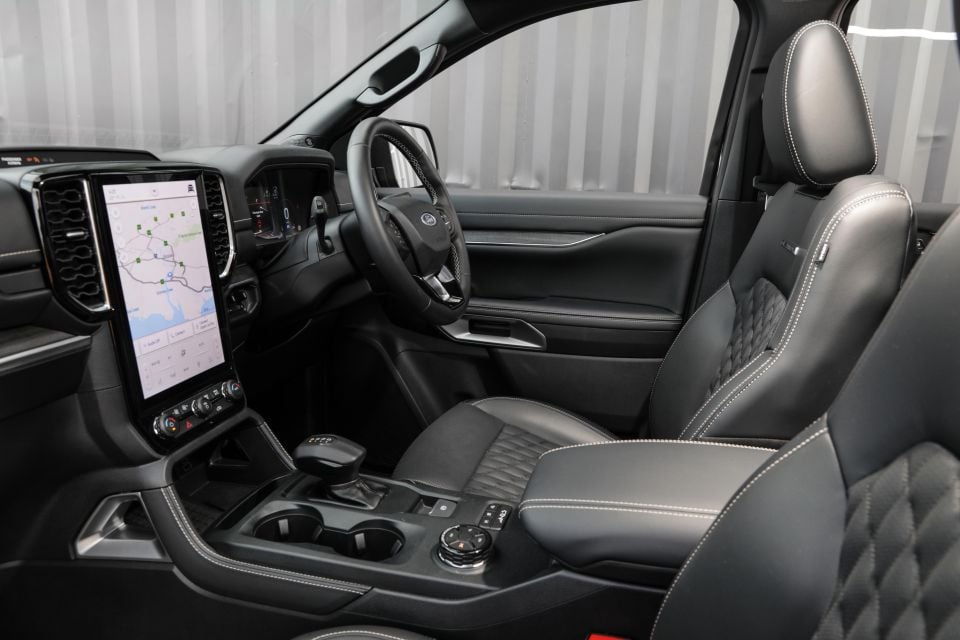

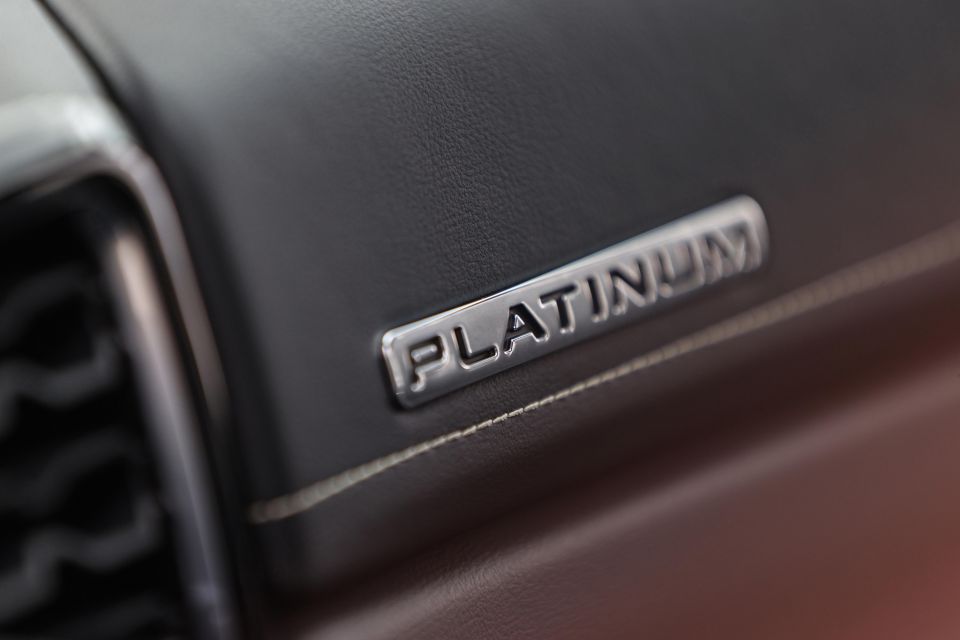
Everest Platinum adds:
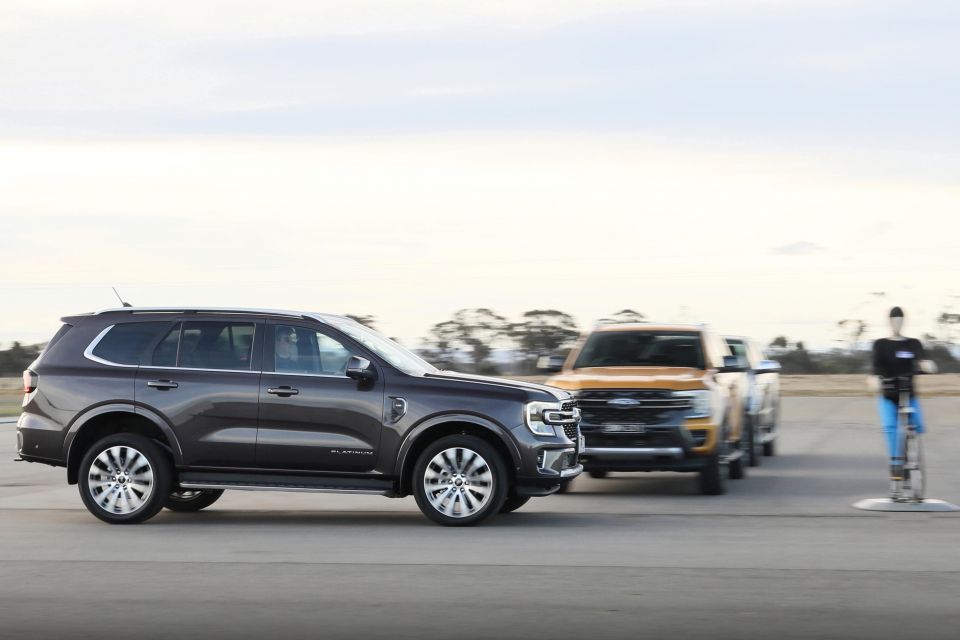
The Ford Everest earned a five-star ANCAP safety rating on the back of an 86 per cent score for adult occupant protection, a 93 per cent score for child occupant protection, a 74 per cent score for vulnerable road user protection, and an 86 per cent safety assist score.
The five-star rating applies to the whole Everest range, and is based on tests carried out on the closely related Ford Ranger ute.
Standard safety equipment includes:
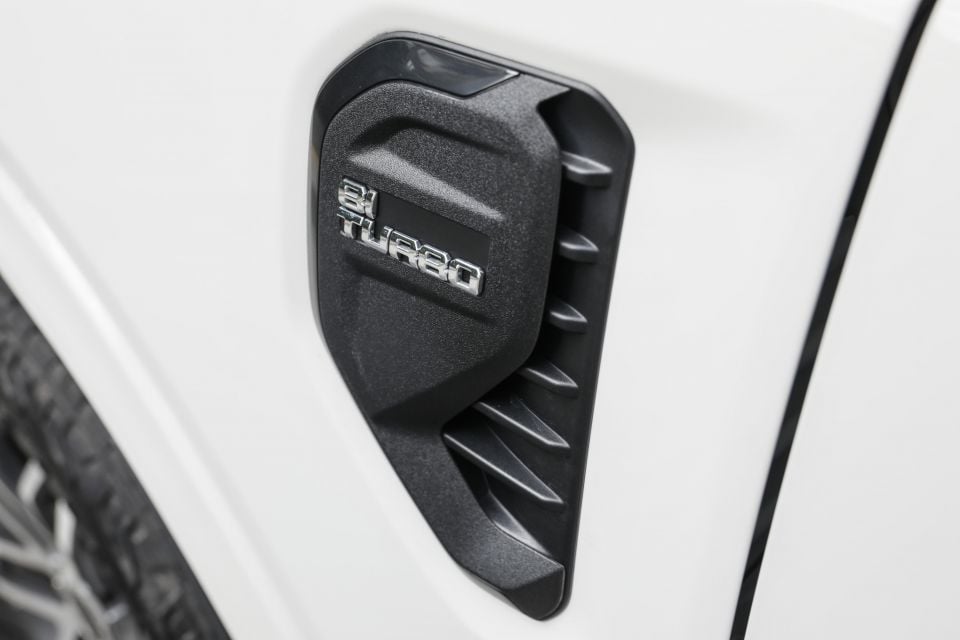
The Everest is backed by a five-year, unlimited-kilometre warranty like the wider Ford range.
Maintenance is required every 12 months or 15,000 kilometres, and the first five services are priced at $329 under the Blue Oval’s capped-price service program.
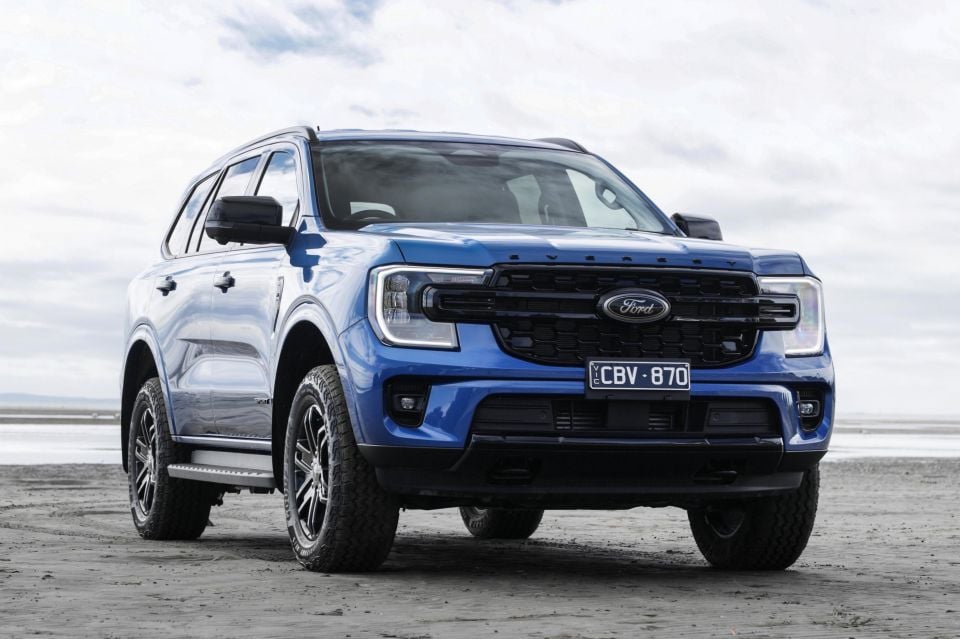
The new Ford Everest follows closely in the footsteps of the related Ranger.
It’s a polished take on the ute-based SUV formula, with a range that covers a lot of ground.
Regardless of which model you choose, it’s a refined way to carry up to seven people, with class-leading infotainment and plenty of space for kids and their stuff.
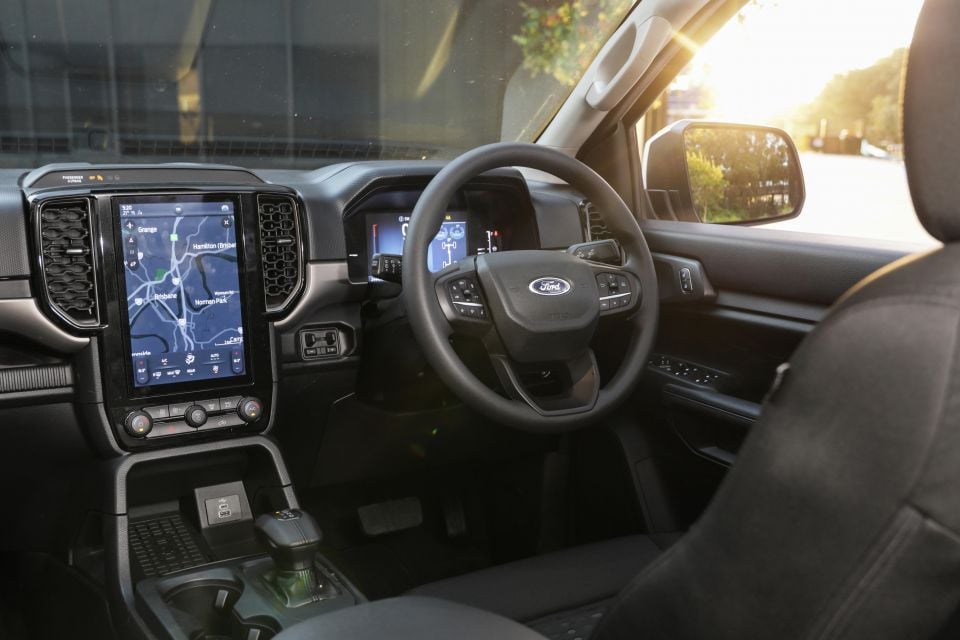
You could argue the base Ambiente is all the Everest anyone needs, which shows how solid the foundations are.
Although the Sport offers a compelling blend of luxuries and value, the Platinum is the model that delivers on Ford’s promise to take the Everest into a space it hasn’t previously occupied.
It’s easily the most polished four-wheel drive of its kind; one which should make a few folks at Toyota very nervous. Now that’s a comparison we’re looking forward to putting together.
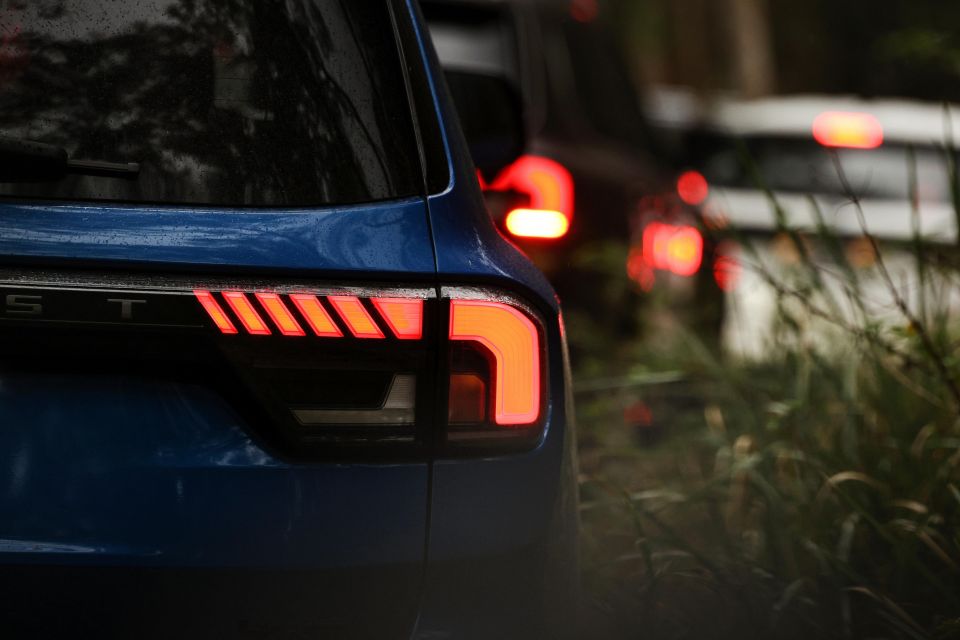
Click the images for the full gallery
MORE: Everything Ford Everest
Where expert car reviews meet expert car buying – CarExpert gives you trusted advice, personalised service and real savings on your next new car.
Scott Collie is an automotive journalist based in Melbourne, Australia. Scott studied journalism at RMIT University and, after a lifelong obsession with everything automotive, started covering the car industry shortly afterwards. He has a passion for travel, and is an avid Melbourne Demons supporter.


Josh Nevett
3 Days Ago


CarExpert.com.au
4 Days Ago


Damion Smy
6 Days Ago


Derek Fung
6 Days Ago


Ben Zachariah
9 Days Ago
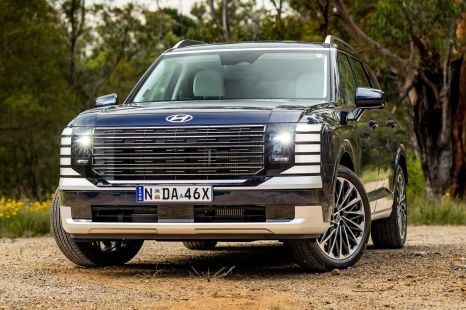

Matt Campbell
12 Days Ago